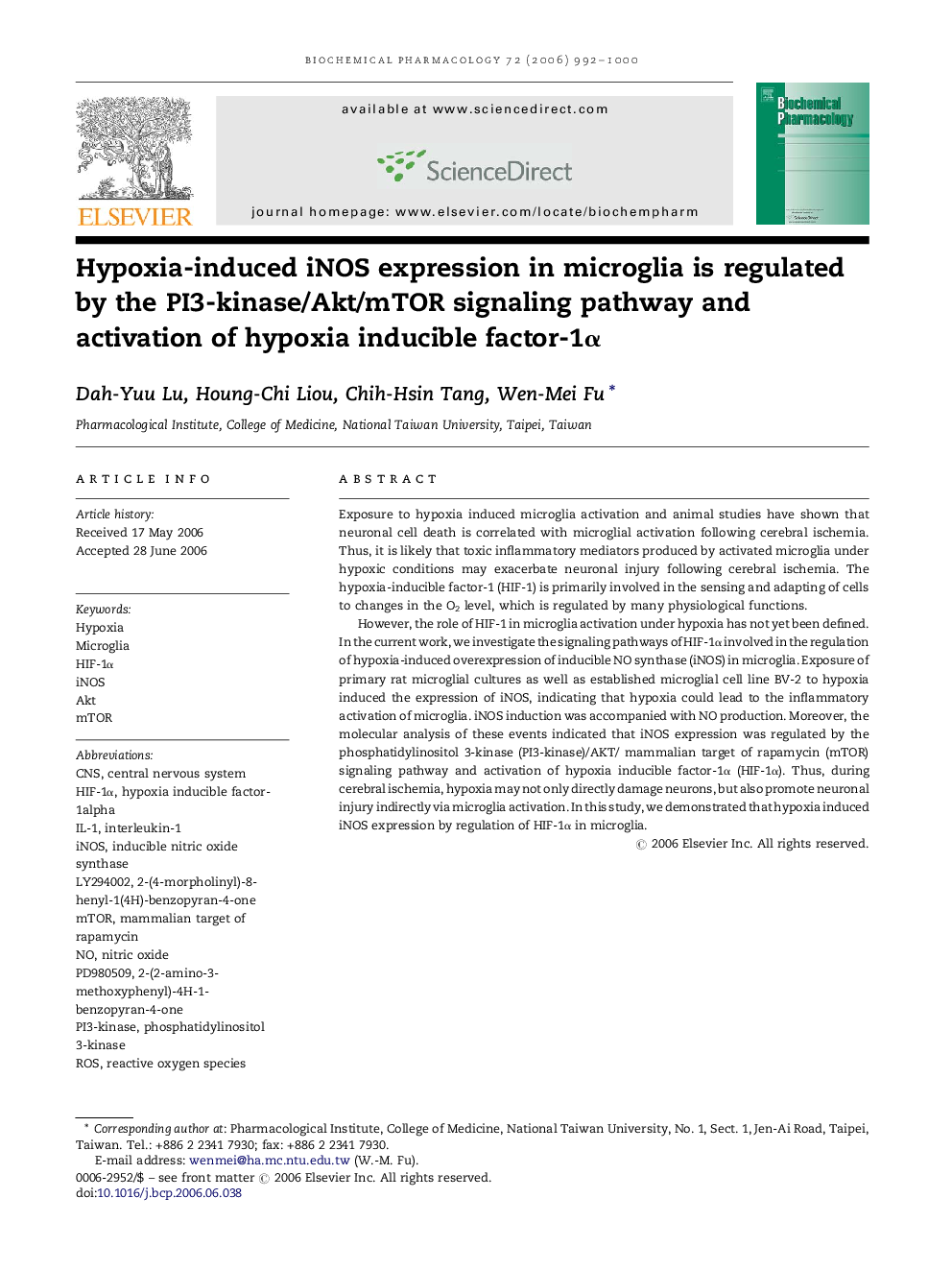| Article ID | Journal | Published Year | Pages | File Type |
|---|---|---|---|---|
| 2515405 | Biochemical Pharmacology | 2006 | 9 Pages |
Exposure to hypoxia induced microglia activation and animal studies have shown that neuronal cell death is correlated with microglial activation following cerebral ischemia. Thus, it is likely that toxic inflammatory mediators produced by activated microglia under hypoxic conditions may exacerbate neuronal injury following cerebral ischemia. The hypoxia-inducible factor-1 (HIF-1) is primarily involved in the sensing and adapting of cells to changes in the O2 level, which is regulated by many physiological functions.However, the role of HIF-1 in microglia activation under hypoxia has not yet been defined. In the current work, we investigate the signaling pathways of HIF-1α involved in the regulation of hypoxia-induced overexpression of inducible NO synthase (iNOS) in microglia. Exposure of primary rat microglial cultures as well as established microglial cell line BV-2 to hypoxia induced the expression of iNOS, indicating that hypoxia could lead to the inflammatory activation of microglia. iNOS induction was accompanied with NO production. Moreover, the molecular analysis of these events indicated that iNOS expression was regulated by the phosphatidylinositol 3-kinase (PI3-kinase)/AKT/ mammalian target of rapamycin (mTOR) signaling pathway and activation of hypoxia inducible factor-1α (HIF-1α). Thus, during cerebral ischemia, hypoxia may not only directly damage neurons, but also promote neuronal injury indirectly via microglia activation. In this study, we demonstrated that hypoxia induced iNOS expression by regulation of HIF-1α in microglia.
